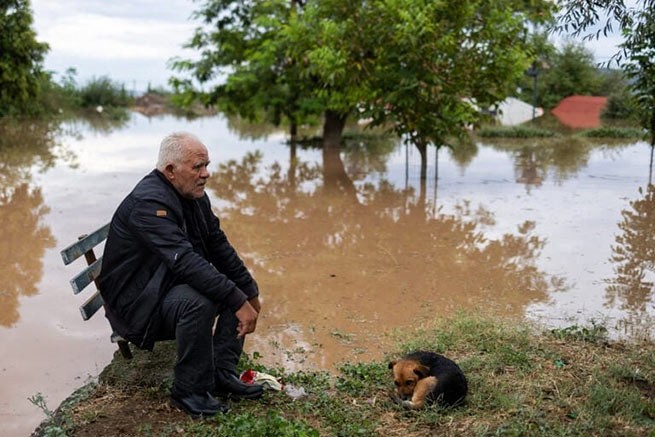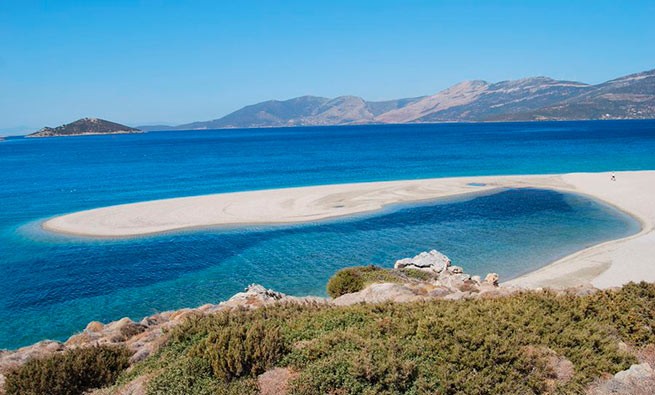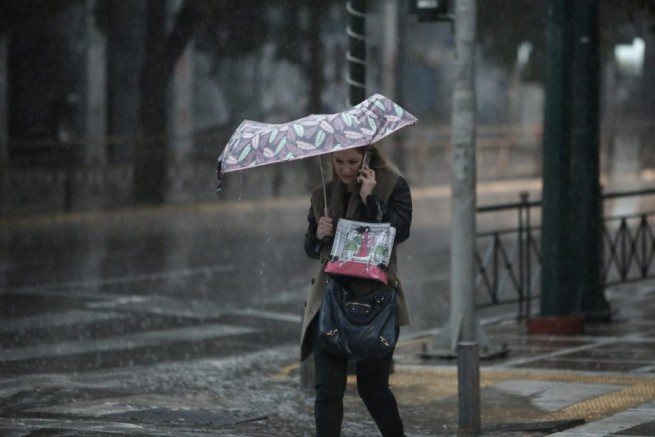The “sea snot” that plagues Turkey’s Marmaras Sea has now penetrated the shores of the Turkish island of Imvros, posing a serious threat to Greek waters.
This island, known in Turkey as Gokceada, is located in the northeastern Aegean Sea, 14 nautical miles from the mouth of the Dardanelles, and 10 and 12 miles, respectively, from the neighboring Greek islands of Lemnos and Samothrace.
The island’s economy is based on fishing and tourism, and slime or sea snot poses an immediate threat to the island’s survival during the already difficult summer due to the coronavirus. The island is a popular tourist destination in Turkey.
The mucus creates an epidemiological crisis for the entire region. The overproduction of microalgae and plant plankton causes nasty mucus that can even trigger an outbreak of infectious diseases such as cholera, scientists say.
Sea snot will affect tourism and fishing in Imvros
According to experts, mucus creates an environment that promotes bacterial proliferation by combining excessive microalgae proliferation with increased sea water temperatures.
CNN Turk reported that there are slime concerns on Imvros as the island is a popular tourist destination in Turkey. A CNN reporter stated:
“Unfortunately, we have long been accustomed to such an image in Marmaras. But this image is not from Marmaras, but from the tourist paradise of the North Aegean Sea, Imvros. (Where) mucus has covered the surface, the sea is not visible. And now it is a serious threat, as its path runs through the Aegean Sea to the Greek islands. The mucus has increased in volume. One of the places that is under particular threat is the port where fishing boats arrive. “
Residents of Imvros reported that due to northerly winds, a few days before the mucus approached the shores of the island, it continued to move into Greek waters. The south wind brought back the mucus. The municipality of Imvros has already begun clearing slime with crews, and locals hope the wind will change direction again so that the hideous mass doesn’t ruin their tourist season.
“Fishermen in Kavala have noticed a thick slimy layer of slimy substance floating off the coast of the city since April,” marine biologist Kalliopi Pagkow told a Greek reporter in early June. “The mucus builds up in their nets, making them so heavy that they often break. Those returning to ships are often empty, as the cells are covered in mucus, making them visible to fish. Although “slime,” as scientists call it, is now not visible in the Greek seas, it is impossible to predict the future if another piece of the slime layer will move from Istanbul to the west, ”says Pagkow.
Greek scientist explains the origin of “sea snot”
Greek scientist who is director of research at Institute of Oceanography of Greece (IO) says sea slime is a naturally occurring green sludge that forms when algae are overloaded with nutrients from hot weather and water pollution. The creamy gelatinous substance is usually not harmful on its own, but it can attract viruses and bacteria, including E. coli, and become a blanket that strangles marine life in the waters below.
The snot of the Sea of Marmara is the largest such phenomenon in history
Silt of the Sea of Marmara is considered the largest such formation in history and is causing havoc among the locals. “The phenomenon of sea snot is rare but common,” notes Pugkow. She recalls the huge sea snot that formed in the Aegean Sea in the 1980s and in the Adriatic Sea in the 1990s.
Pugkow told the Greek Reporter that the phenomenon is the result of an overproduction of phytoplankton caused by the dumping of untreated domestic and industrial waste into the sea and climate change as higher temperatures favor the process.
“This is a phenomenon that usually occurs in shallow or closed seas such as the Sea of Marmara. However, this time, due to human activities, it has become gigantic, ”she explains.
Boats cruising in the Sea of Marmara have to overcome gray mud, which prevents fishermen from working, as it clogs motors and nets. Divers report that large numbers of fish and other marine life are dying of suffocation.






More Stories
Residents of 5 regions of Greece received "a storm warning"
Dolphins appeared in Thermaikos this morning
Most polluted countries in 2023: Greek regions with worst air quality